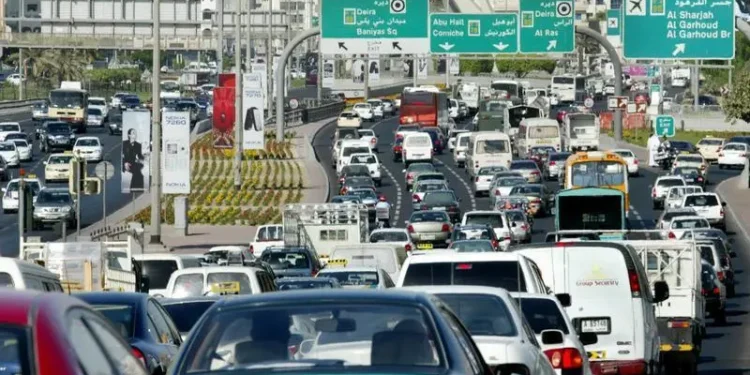Dubai’s Roads and Transport Authority just rolled out “Data Drive–Clear Guide,” an AI-powered platform that identifies traffic problems and resolves them in real-time.
The platform processes five years of historical traffic data alongside live road conditions across Dubai’s entire network. It identifies congestion patterns, speed drops, and smooth flow periods instantly.
How Dubai’s AI Traffic System Actually Works
The Data Drive platform connects to multiple international data sources that feed massive amounts of traffic information into intelligent processing tools. Previously, RTA teams spent weeks gathering information from consultants and field teams, manually compiling reports based on traffic variables.
Now the system delivers real-time notifications about traffic movement across Dubai’s streets. Teams can intervene quickly when problems emerge, taking immediate action to minimize delays.
The platform displays current road conditions through interactive mapping. Users can specify geographic areas for analysis based on average speed, traffic density, and travel time indicators. This geographic targeting helps identify exactly which roads need attention.

Dubai’s new AI traffic platform monitors real-time conditions across the emirate’s road network
Dubai Traffic Problems Keep Getting Worse
Dubai faces serious traffic challenges that demand smart solutions. The emirate registered 2.5 million vehicles in 2024, half of all vehicles registered across the UAE. During daytime hours, 3.5 million vehicles crowd Dubai’s roads.
Vehicle ownership surged 10% over two years, far above the global average of 2-4%. Dubai’s population grows at over 6% annually compared to the global rate of 1.1%. The daytime population could hit 8 million by 2040.
This explosive growth creates unique challenges. A multicultural population brings diverse driving behaviors. Many residents lack awareness of peak travel hours, adding pressure to major corridors during rush periods.
Advanced Analytics Transform Traffic Management Speed
The AI platform provides advanced analytical tools for assessing traffic performance across different timeframes. Teams can benchmark current conditions against five years of historical data, comparing performance across specific days, weeks, or longer periods.
This capability helps detect recurring congestion patterns and unexpected speed drops. The system generates automated reports that assess conditions before and after road works, helping evaluate project effectiveness through reliable, continuously updated datasets.
Real-time monitoring extends to traffic diversions and special events. When issues arise, RTA teams receive instant alerts enabling swift intervention and appropriate countermeasures.
RTA’s Broader AI Strategy Targets Major Improvements
The Data Drive platform supports RTA’s comprehensive AI Strategy 2030, which includes 81 projects targeting significant improvements by 2030. The strategy aims for 30% travel time reductions, 40% productivity increases, and 20% operational cost savings.
RTA operates over 40 AI use cases since launching its Big Data Platform in 2017. The system now manages 670 terabytes of data integrated across 49 systems. This foundation supports intelligent traffic management, predictive maintenance, and autonomous mobility integration.
Dubai already implemented dynamic tolling and variable parking tariffs this year, resulting in 9% traffic volume reductions and 4% increases in public transport ridership.
Smart City Goals Drive Traffic Innovation Forward
The platform advances Dubai’s goal to become the world’s smartest city through digital transformation and enhanced competitiveness. RTA continues expanding AI deployment across intelligent data analytics, traffic management, and autonomous mobility through an integrated technology ecosystem.
This approach replaces reactive manual processes with proactive data-driven decision-making. Instead of waiting weeks for traffic analysis, officials can respond to emerging problems within minutes of detection.
The system supports RTA’s broader vision of alleviating Dubai congestion while delivering best-in-class services. As population and vehicle numbers continue growing, AI-powered traffic management becomes essential for maintaining mobility across the emirate.
Dubai’s traffic management transformation demonstrates how cities can leverage artificial intelligence to solve complex urban challenges. The Data Drive platform shows that smart technology deployment can turn traffic problems from long-term headaches into solvable puzzles addressed in real-time.













